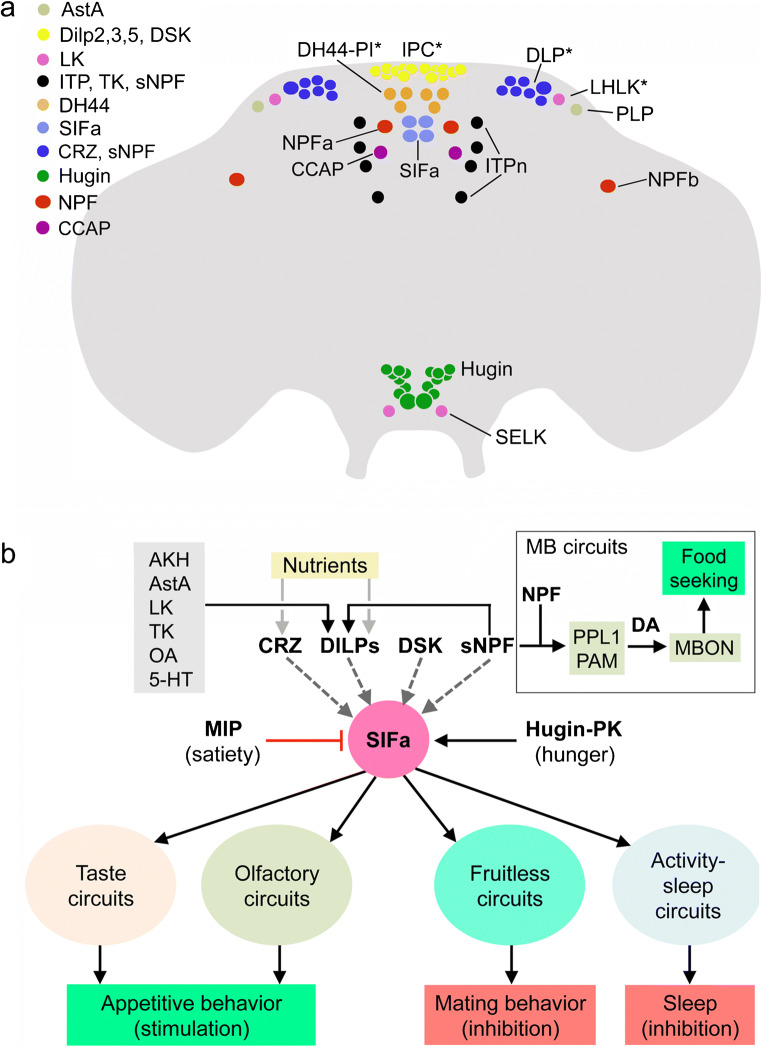Fig. 7.
Schemes depicting hormonal systems that regulate feeding and associated behaviors. a Distribution of cell bodies of peptidergic neuroendocrine cells in the brain of Drosophila that play roles in feeding. These are neurosecretory cells in MNC (IPC and DH44-PI) and LNC groups (ITPn and DLP) and interneurons located in distinct brain regions (LHLK, PLP, NPF, SIFa, Hugin and SELK); a few of the Hugin cells are neurosecretory cells. The neuron groups indicated with asterisks are nutrient sensing (only a subset of the DLPs) and the Hugin cells in the subesophageal zone receive gustatory inputs. The peptides released from these cells are shown in the legend in the upper left part of the figure (acronyms as in Table 1). Note that also circuits associated with the mushroom bodies (see box in panel b) are linked to some of the peptidergic systems shown and are involved in regulation of food seeking and feeding (Tsao et al. 2018). See text for literature references. b Four neurons producing SIFamide (SIFa) have arborizations that are widely spread throughout the brain. These SIFa neurons coordinate appetitive behavior but also influence mating and sleep (Dreyer et al. 2019; Martelli et al. 2017; Terhzaz et al. 2007). The SIFa neurons are under direct regulation by peptidergic satiety inputs (myoinhibitory peptide, MIP) and hunger inputs (Hugin-PK). SIFa neurons act on gustatory and olfactory sensory neurons, as well as sets of neurons expressing the transcription factor Fruitless, known to regulate sex-specific behavior. They also act on MNCs in the pars intercerebralis that signal with diuretic hormone 44 and insulins (not shown in the figure), as well as specific neuronal circuits regulating sleep. Anatomical studies (reconstitution of split-GFP) suggest that the SIFa neurons also receive inputs from neurons that play roles in feeding and metabolism that produce corazonin (CRZ), DILPs, sulfakinin (DSK) and sNPF (Martelli et al. 2017). The IPCs are in turn regulated by sNPF and several other factors shown in the gray box in the upper left. Mushroom body–associated circuits (in box) are also involved in the regulation of food seeking; sNPF and NPF act on different sets of dopaminergic (DA) neurons (PPL, PAM), which in turn act on specific sets of mushroom body output neurons (MBONs) that induce food-seeking behavior (Tsao et al. 2018). This figure is updated from Nässel et al. (2019), which was based on data from Martelli et al. (2017) and Tsao et al. (2018)

